What Is Wind Energy? The Force of Nature
In the quest for cleaner, more sustainable energy sources, “What is wind energy?” emerges as a pivotal inquiry. At its core, wind energy harnesses the wind’s kinetic energy, transforming it into electrical energy that powers our homes, industries, and lives. It represents not just a clean energy alternative but a testament to humanity’s ingenuity in tapping into the Earth’s natural resources. This exploration of wind energy will serve as an authoritative guide. Empathetically understanding the reader’s quest for knowledge and the collective aim for a sustainable future.
What is Wind Energy? Find out by watching my video below
What is Wind Energy? The Essence of Wind Energy
Understanding Wind’s Kinetic Power
Wind energy, at its foundation, utilizes the power of the wind, an abundant and renewable energy source. It’s the process of converting the wind’s kinetic energy into mechanical energy and, subsequently, electrical energy. This transformation is achieved through wind turbines, which are marvels of modern engineering designed to capture the wind’s force efficiently.
- Key Components: A typical wind turbine features a tall tower, rotor blades, and a nacelle housing the electric generator and drive shaft. The rotor blades catch the wind, turning the drive shaft and generating mechanical energy. This mechanical energy is then converted into electrical energy by the electric generator. Ready to be transmitted through power lines to the electric grid.
The Role of Wind Power Plants
Wind power plants, or wind farms, are collections of wind turbines in a single location used to produce electricity. They can be found onshore (land-based) or offshore (in bodies of water). And play a crucial role in meeting electricity demand in various regions. Offshore wind farms, in particular, have gained attention for their enormous potential and capacity to generate significant amounts of clean energy.
What is Wind Energy? The Path to Clean and Renewable Energy
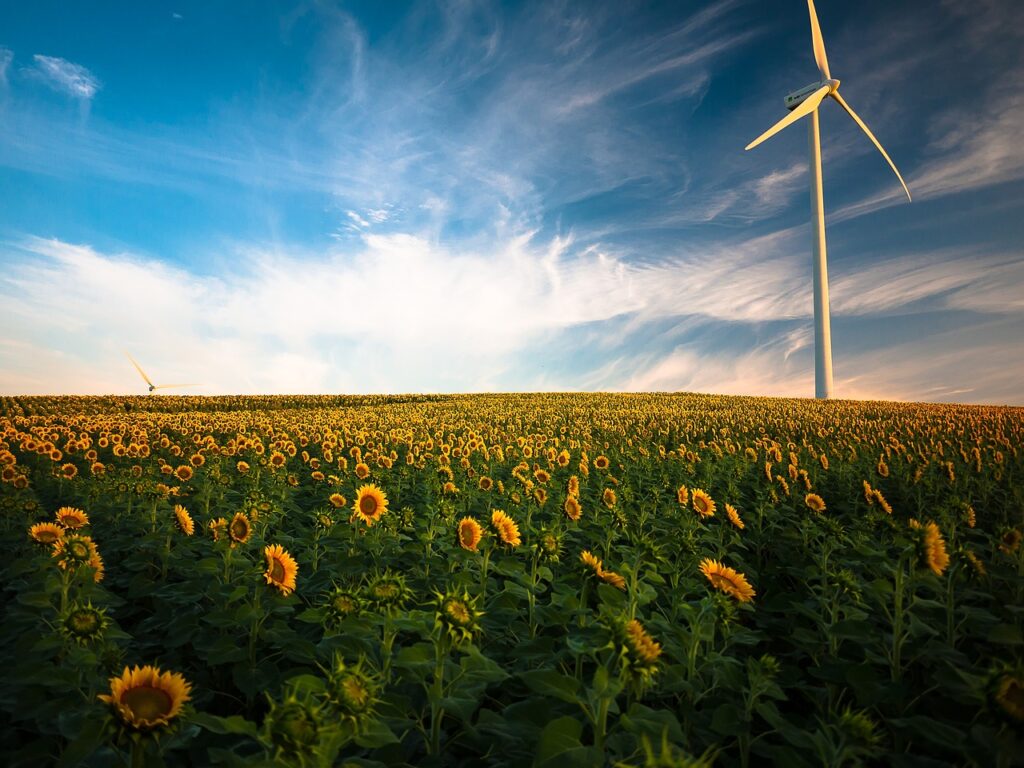
Wind Energy’s Environmental Impact
“What is wind energy’s role in combating climate change?” Wind energy is a beacon of hope in the fight against global warming. By providing a renewable energy source, wind power significantly reduces greenhouse gas emissions. Which are a major contributor to climate change. Unlike fossil fuels, wind energy produces no greenhouse gases during operation. Making it an essential component of a sustainable energy future.
- Advantages Over Fossil Fuels: Besides its minimal environmental footprint, wind energy, as a clean energy source, offers several advantages over traditional fossil fuels. It requires less land, consumes no water during operation, and, most importantly, is inexhaustible. These attributes underscore wind energy’s significance as a cornerstone of renewable energy strategies worldwide.
Wind Energy Across the Globe
Wind Resources and Capacity
The United States stands as a testament to the power of wind. With its vast wind resources and growing wind power capacity. According to the National Renewable Energy Laboratory (NREL), the U.S. has a significant wind energy potential. Capable of satisfying a substantial portion of the country’s electricity demand. This potential is particularly pronounced in rural areas and higher elevations, where wind speeds are generally more favorable.
- Global Perspectives: On a global scale, wind energy’s footprint is expanding. The Global Wind Energy Council highlights the rapid growth of wind power. With offshore wind turbines and farms marking the frontier of this expansion. Countries are increasingly recognizing the strategic importance of wind energy in achieving energy independence. And reducing reliance on imported fossil fuels.
What is wind energy? Frequently Asked Questions
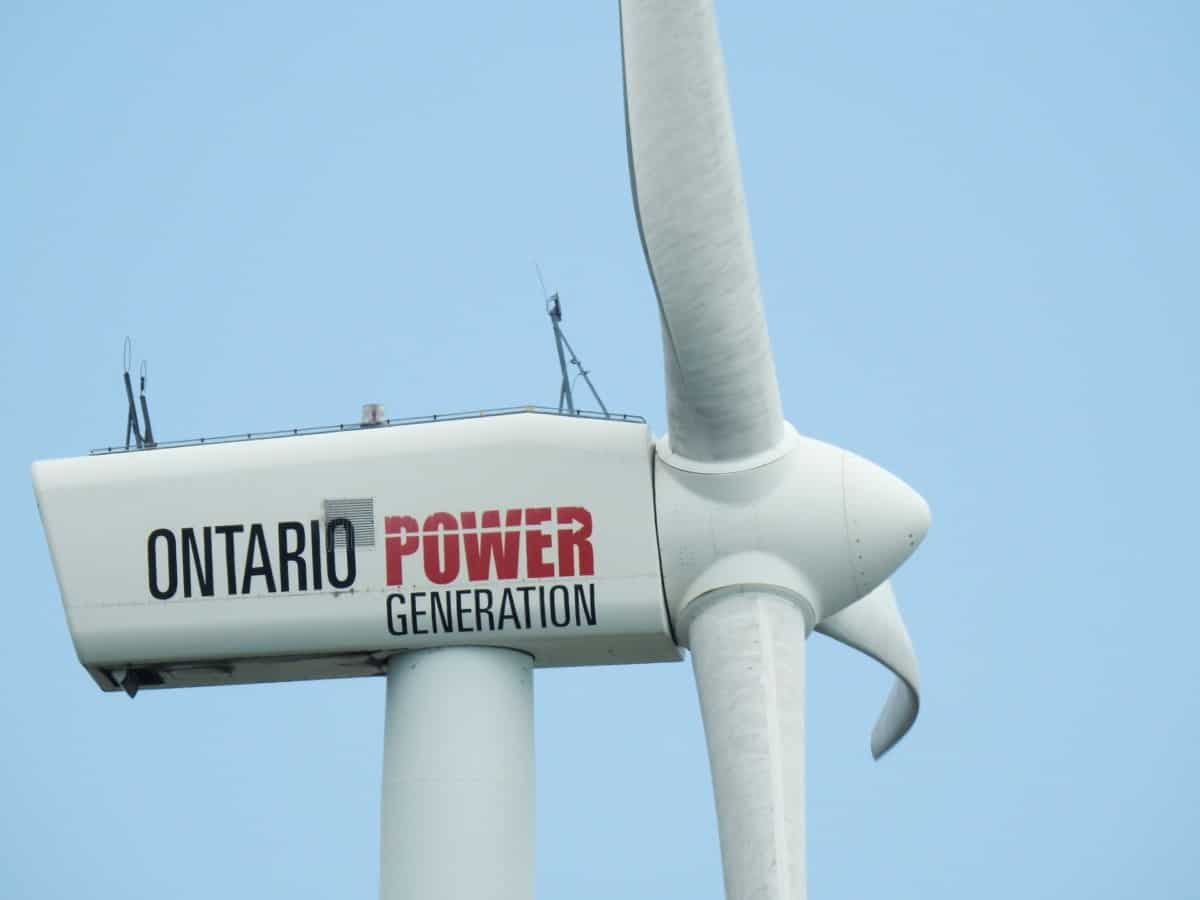
How does a wind turbine work?
A wind turbine works by converting the wind’s kinetic energy into electrical energy. When wind flows over the turbine’s blades, it causes them to spin, turning a rotor connected to the main shaft. This shaft spins a generator to produce electricity. The key components involved in this process include the rotor blades, the drive shaft, and the generator. The efficiency of this conversion process is influenced by the wind speed, turbine design, and the technology used in the generator.
What makes offshore wind energy special?
Offshore wind energy is special due to its ability to harness stronger and more consistent winds found over bodies of water, compared to onshore winds. These conditions can lead to higher energy production rates. Additionally, offshore wind farms are often located away from populated areas, reducing concerns over noise and landscape impacts. Offshore turbines can be built larger than their land-based counterparts, further increasing their energy generation potential. The expansion of offshore wind energy is also seen as a critical step in diversifying energy sources and reducing dependency on fossil fuels.
Can wind energy completely replace fossil fuels?
While wind energy is a powerful and clean renewable resource, completely replacing fossil fuels with wind energy alone presents challenges. These include the intermittent nature of wind and the current dependence on fossil fuels for baseline power and transportation. And the need for significant upgrades to energy infrastructure and storage solutions. However, when combined with other renewable energy sources, like solar and hydroelectric power, and improvements in energy efficiency and storage technologies, wind energy can significantly reduce our reliance on fossil fuels and play a crucial role in a diversified, sustainable energy mix.
What are the financial incentives for investing in wind energy?
Financial incentives for investing in wind energy vary by country but commonly include tax credits, grants, low-interest loans. And feed-in tariffs that offer above-market rates for renewable energy fed into the grid. In the United States, for example, the Production Tax Credit (PTC) and Investment Tax Credit (ITC) have been pivotal in supporting the wind industry’s growth. These incentives aim to make wind energy projects more financially viable, lower the cost of development, and encourage private investment in renewable energy.
How does wind energy contribute to energy security?
Wind energy contributes to energy security by diversifying the energy supply and reducing dependence on imported fossil fuels, which can be subject to volatile prices and geopolitical tensions. By investing in wind energy, countries can produce their own electricity, stabilizing energy costs and ensuring a reliable supply. Moreover, wind energy’s scalability, from small turbines powering individual homes to large offshore wind farms, allows for flexible deployment across different regions, further enhancing energy security. Wind energy also complements other renewable sources, ensuring a more stable and resilient energy grid.
What is Wind Energy?
This introduction and overview of wind energy pave the way for a deeper dive into its mechanisms, benefits, and global impact. The journey through the realm of wind energy is not just about understanding a renewable resource but appreciating the synergy between nature and technology in powering our future.
Delving Deeper: The Mechanics of Wind Power
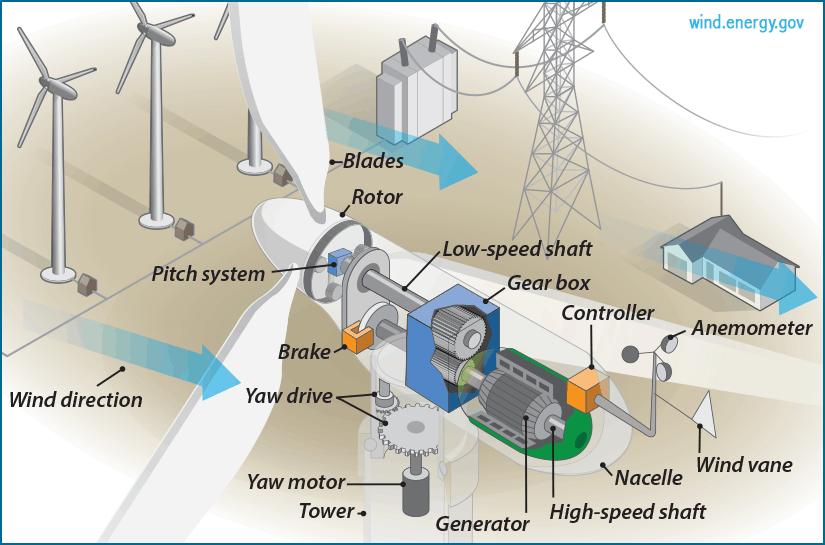
The Engineering Behind Wind Turbines
Understanding how a wind turbine works is essential to grasping the full potential of wind energy. A wind turbine captures the wind’s kinetic energy through its rotor blades, which operate similarly to airplane wings. When wind flows over the blade, a difference in air pressure is created on either side of the blade, causing it to spin. This spinning motion turns the drive shaft connected to an electric generator, thereby converting mechanical energy into electrical energy. The efficiency of this process is greatly influenced by the wind speed, as the amount of energy produced is exponentially related to the wind’s speed.
- Rotor Diameter and Energy Production: The rotor diameter of a wind turbine significantly impacts the amount of power it can generate. Larger rotors capture more wind, leading to higher energy production. This principle is applied in both small wind turbines, suitable for individual homes, and large wind turbines used in utility-scale wind farms.
Offshore vs. Onshore Wind Energy
The distinction between offshore and onshore wind energy highlights the versatility of wind as a renewable energy source. Offshore wind turbines are built in large bodies of water, where wind speeds are typically higher and more consistent than on land. This leads to a higher capacity factor for offshore wind farms, meaning they can generate more electricity over a given period compared to their onshore counterparts. Furthermore, offshore wind energy has the advantage of being closer to large coastal cities, where electricity demand is often highest, reducing the need for extensive transmission lines.
- Advantages of Offshore Wind Energy: Offshore wind farms can be constructed out of sight from land, minimizing visual and noise impacts. Despite higher initial construction and maintenance costs, the greater energy yield and potential for reducing transmission losses make offshore wind a promising area of expansion.
Wind Energy and Climate Change Mitigation
The role of wind energy in mitigating climate change cannot be overstated. By replacing fossil fuels, which are the largest source of greenhouse gas emissions globally, wind energy reduces the concentration of CO2 in the atmosphere. This transition to clean energy sources is crucial for limiting global warming and its associated impacts on the environment and human societies.
- Renewable Energy’s Role in Reducing Emissions: The shift towards wind and other renewable sources is reflected in national and international policies aimed at achieving net-zero emissions. Wind energy, with its low operational emissions and ability to generate large amounts of electricity, is at the forefront of this transition.
Wind Energy’s Contribution to Energy Security
Energy security is a critical concern for many countries, dependent on imported fossil fuels to meet their energy needs. Wind energy offers a solution to this challenge by providing a domestic source of power that can reduce reliance on foreign energy supplies. Furthermore, the distributed nature of wind power generation can enhance the resilience of the electric grid against outages and disruptions.
- Benefits for Rural and Remote Areas: In rural and remote areas, where extending the electrical grid can be prohibitively expensive, small wind turbines offer a viable alternative for generating electricity. These areas can benefit significantly from wind energy, improving access to electricity and contributing to local economic development.
What is Wind Energy? Conclusion: Embracing the Wind
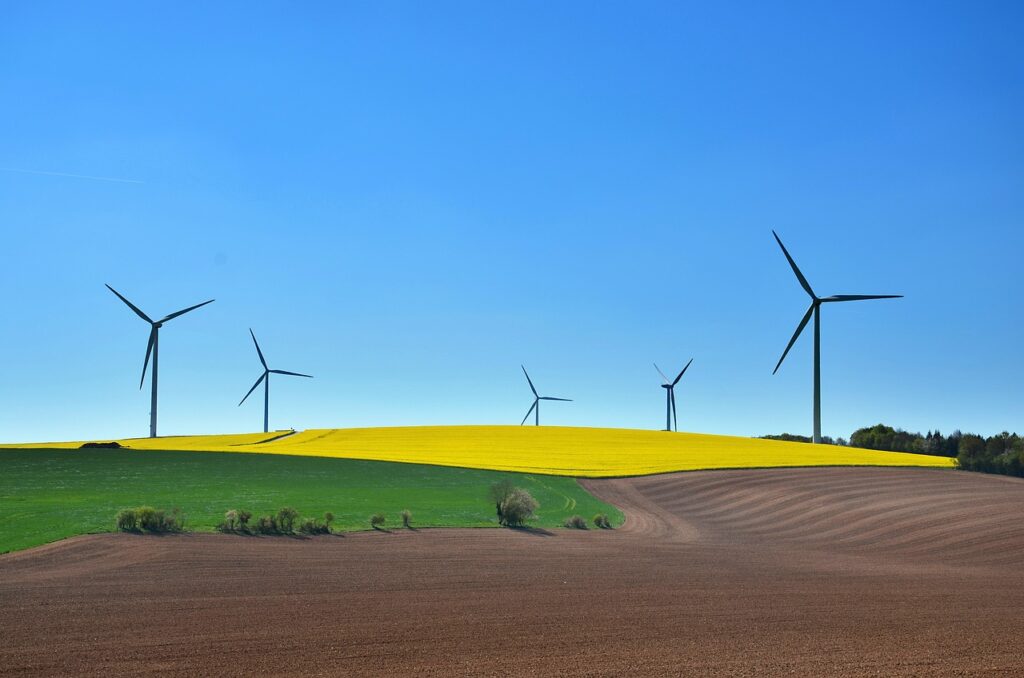
As we delve into the complexities and advantages of wind energy, it’s clear that this renewable resource holds the key to a sustainable energy future. From its environmental benefits to its role in enhancing energy security, wind energy stands as a testament to human innovation and our ability to harness the natural world for the greater good. The transition to wind and other renewable sources is not just an environmental imperative but a strategic move towards a more resilient and sustainable energy system.
In the next section, we will explore the economic aspects of wind energy, including financial incentives and the economic impact of wind power development on local communities and the global economy.
What is Wind Energy?
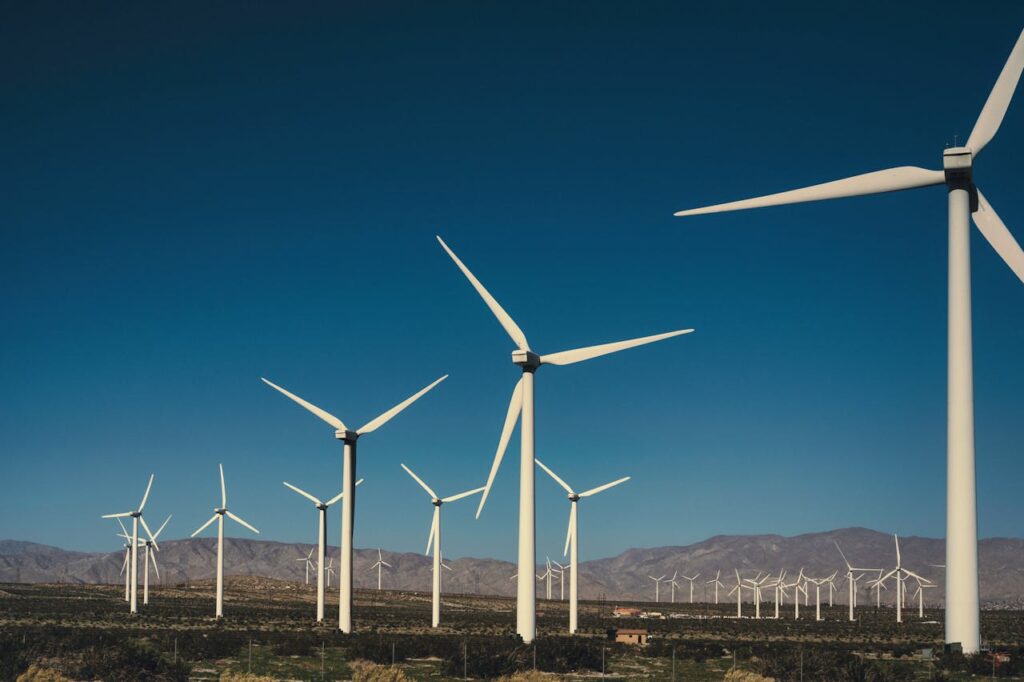
Harnessing the Wind: The Mechanics Behind Wind Turbines
The Anatomy of a Wind Turbine
To fully grasp “What is wind energy?” we delve into the marvel of engineering that is the wind turbine. Each turbine is a testament to human ingenuity, designed to capture the wind’s kinetic energy with maximum efficiency. At the heart of a wind turbine are several key components:
- Rotor Blades: These are the most visible parts of the turbine, capturing wind energy and transforming it into rotational motion.
- Drive Shaft: Connected to the rotor blades, it spins with them, transferring the rotational motion to the generator.
- Electric Generator: This component converts mechanical energy from the drive shaft into electrical energy, ready for use or distribution.
Wind turbines come in various sizes, from small systems for individual homes to massive turbines for utility-scale wind farms. Their design often includes horizontal-axis wind turbines, the most common type, characterized by their tall towers and large rotor blades that face into the wind.
The Process of Generating Wind Power
The process starts when the wind encounters the rotor blades, causing them to turn. The blades are engineered to capture as much wind power as possible, with their shape and angle carefully calculated to maximize efficiency. As the blades spin, they turn the drive shaft within the nacelle, which in turn activates the generator. The generator’s role is pivotal; it converts the mechanical energy into electrical energy, which is then sent through transmission lines to the electric grid.
For more information read my in-depth article How Does a Wind Turbine Generate Electricity?
What is Wind Energy? The Evolution of Wind Energy
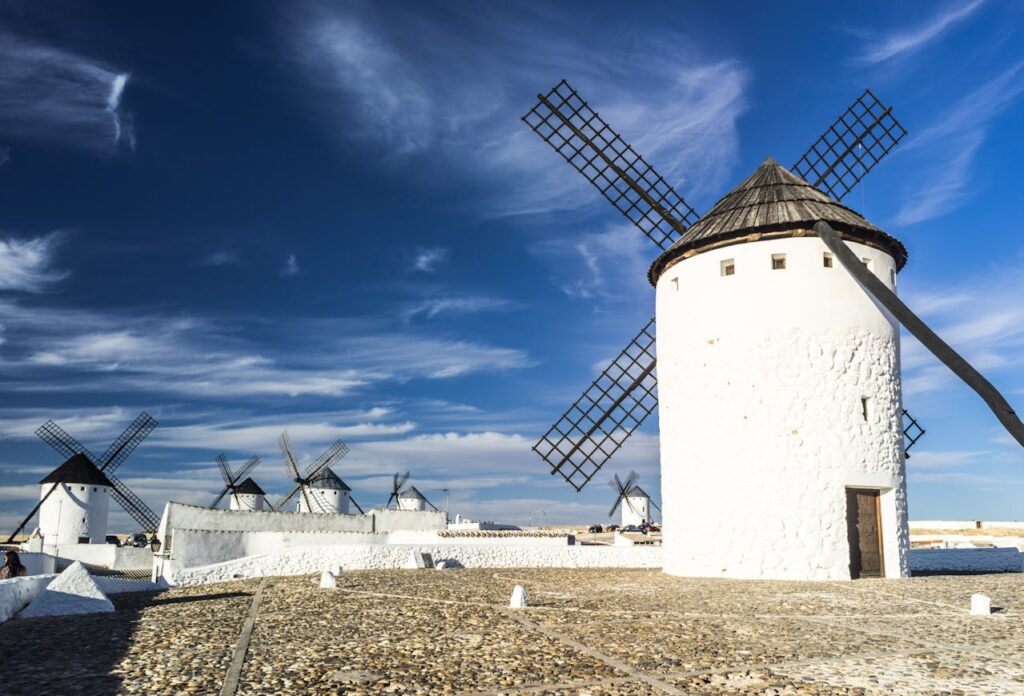
From Ancient Times to Modern Turbines
The journey of wind energy from the first wind turbines on the banks of the Nile River to today’s modern turbines is a story of technological evolution and human innovation. Ancient civilizations harnessed wind power to grind grain and pump water, laying the groundwork for today’s wind energy technology. The evolution to electricity generation began in the late 19th century, but it was the energy crises of the 1970s that truly catapulted wind energy to the forefront of renewable energy solutions.
- Modern Turbines: Today’s wind turbines are feats of engineering, capable of generating substantial amounts of power. The rotor diameter and the height of the turbines have increased significantly, allowing for greater wind capture and energy production. Modern turbines are also equipped with sophisticated technology to optimize performance and adapt to changing wind conditions.
The Growth of Wind Capacity
The global capacity for wind energy has seen exponential growth, driven by the demand for cleaner, more sustainable sources of power. According to the Global Wind Energy Council, wind power capacity worldwide continues to set new records, with significant contributions from both onshore and offshore wind farms. This growth is not only a testament to wind energy’s potential as a renewable energy source but also to the increasing efficiency and decreasing costs of wind turbine technology.
Related article: How do Wind Turbines Work Without Wind
Wind Energy and Its Role in Sustainable Development
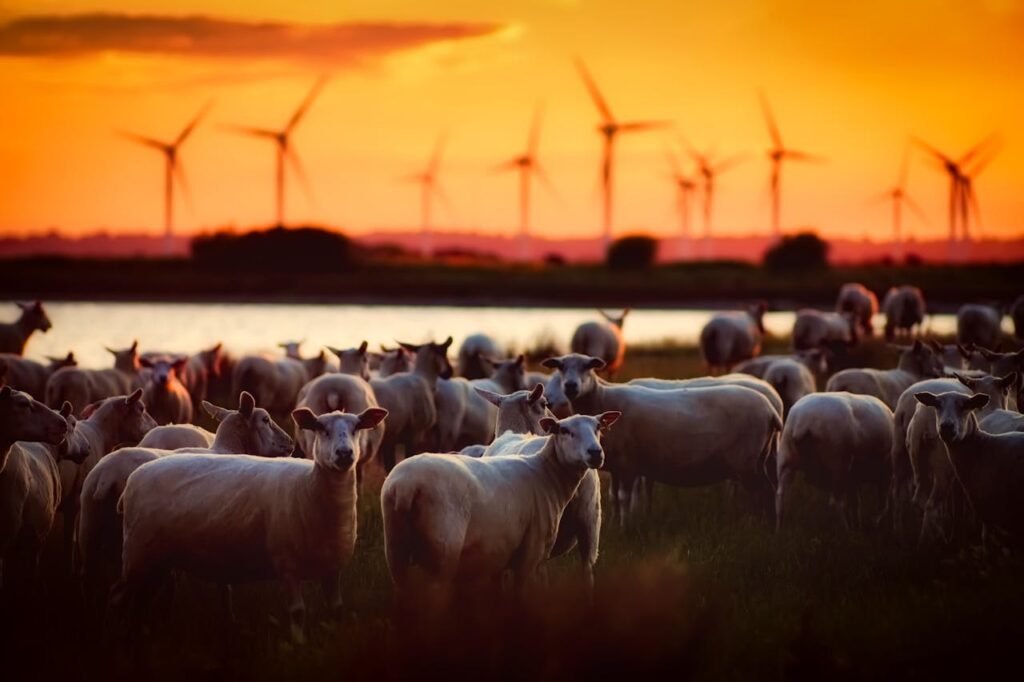
Clean Energy for a Sustainable Future
“What is wind energy’s contribution to sustainable development?” Wind energy stands as a pillar of clean, renewable energy, crucial for reducing global dependence on fossil fuels and mitigating the impacts of climate change. By harnessing the power of the wind, we can produce electricity without emitting greenhouse gases, thus preserving the environment for future generations.
- Environmental Benefits: The environmental benefits of wind energy extend beyond reducing greenhouse gas emissions. Wind farms require less land than traditional power plants, and the land can often be used for agricultural purposes. Moreover, wind energy consumes no water during operation, making it an eco-friendly alternative to fossil fuel and nuclear power plants, which require substantial amounts of water for cooling.
Economic and Social Impact
Wind energy not only contributes to a cleaner planet but also offers significant economic and social benefits. The industry creates jobs, from manufacturing and installation to maintenance and operation of wind turbines. Financial incentives, such as the Production Tax Credit in the United States, have further spurred the growth of the wind industry, making wind energy an increasingly competitive alternative to traditional energy sources.
- Accessibility and Reliability: Wind energy has the unique advantage of being accessible in remote and rural areas, where extending the electrical grid may be impractical or too expensive. Small wind turbines can provide electricity to individual homes or communities, while larger turbines can contribute to the national grid, offering a reliable source of energy that complements other forms of renewable energy like solar power.
What is wind energy? Frequently Asked Questions
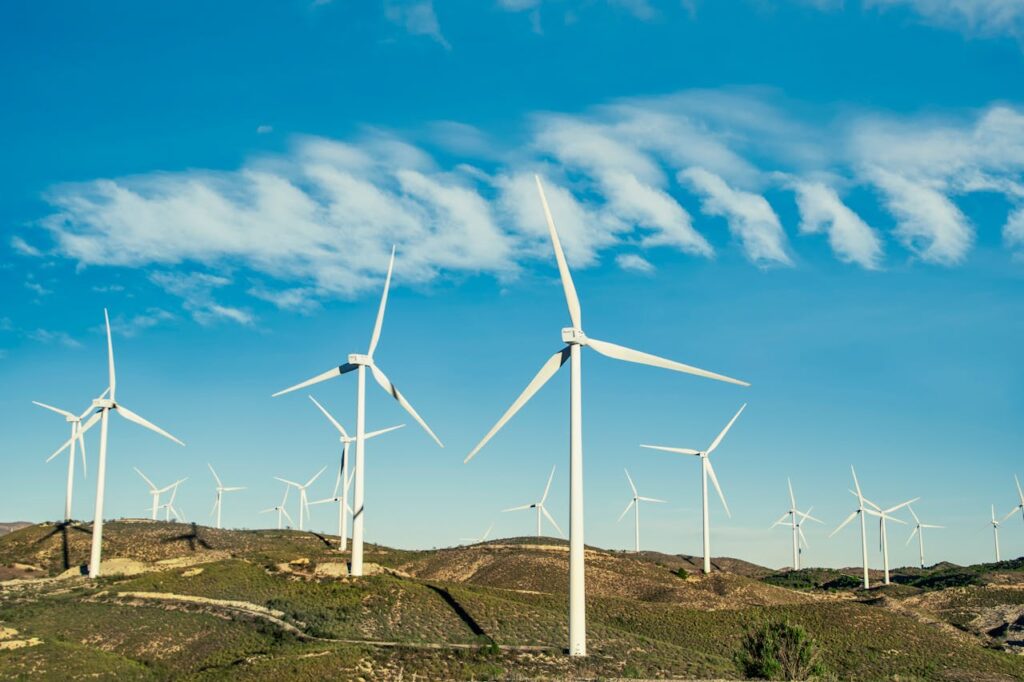
How efficient are wind turbines in converting wind into energy?
Wind turbines convert around 35-50% of the kinetic energy in wind into electrical energy, which is a favorable efficiency rate compared to other energy conversion technologies. The Betz limit, a theoretical maximum efficiency for wind turbines, is about 59.3%, indicating that no wind turbine can convert more than 59.3% of the wind’s kinetic energy into mechanical energy. Modern turbines are designed to get as close to this limit as possible under optimal conditions.
What are the challenges facing wind energy deployment?
The challenges facing wind energy deployment include site selection, where wind resources might not be consistent or strong enough for optimal operation. There’s also public opposition due to concerns over landscape changes and noise. The intermittent nature of wind requires the development of energy storage or backup systems to ensure a stable energy supply. Additionally, the initial investment cost and the need for infrastructure, like transmission lines to connect wind farms to the grid, pose significant challenges.
How do wind turbines impact wildlife and the environment?
Wind turbines can impact wildlife, particularly birds and bats, through collisions with the turbine blades. There’s ongoing research and development of mitigation strategies, such as turbine siting, technology to detect and deter wildlife, and modifications to turbine operations during peak migration periods. Environmentally, wind farms have a relatively low impact compared to fossil fuel sources, as they don’t emit greenhouse gases or pollutants and use minimal water in operation. However, they do require significant land or sea space, which can lead to habitat disruption if not carefully managed.
What is the lifespan of a wind turbine?
The lifespan of a wind turbine is typically 20-25 years. During this time, components may need to be repaired or replaced to maintain efficiency and safety. After a turbine’s operational life, it can be decommissioned and dismantled, with many components being recycled. The industry is also exploring ways to extend the lifespan of turbines through upgrades and retrofitting to make wind energy even more sustainable and cost-effective.
How do wind energy costs compare to traditional energy sources?
The cost of wind energy has significantly decreased over the past decade, making it one of the most competitive renewable energy sources. Onshore wind energy is now often on par with or cheaper than coal, natural gas, and nuclear power in many regions, thanks to technological advancements, economies of scale, and supportive policies. Offshore wind, while currently more expensive than onshore wind due to higher installation and maintenance costs, is also seeing cost reductions. The levelized cost of energy (LCOE) for wind continues to decline, making it an increasingly attractive option for new electricity generation capacity.
The transformation of wind energy from an ancient resource into a cornerstone of modern renewable energy showcases humanity’s commitment to innovation and sustainability. As we continue to develop and refine wind turbine technology, the potential of wind energy to power our world sustainably becomes increasingly clear.
Economic Benefits: The Windfall from Wind Energy
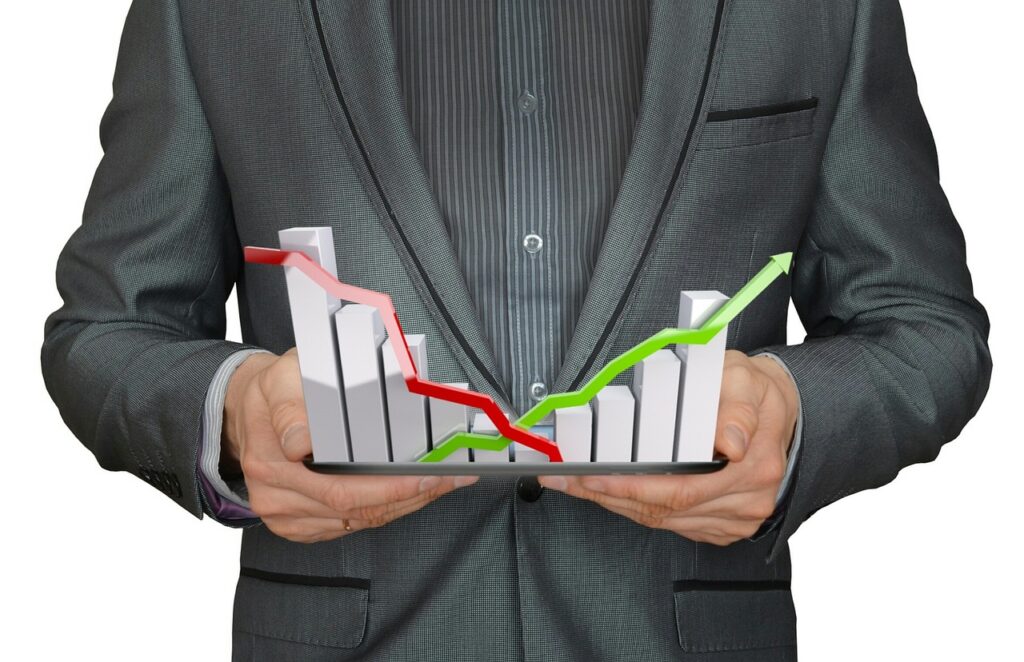
Driving Economic Growth
The economic implications of wind energy extend far beyond the environmental. “What is wind energy doing for the economy?” It’s creating jobs, stimulating economic growth, and providing communities with sustainable income sources. The wind energy sector has become a significant employer, with jobs ranging from construction and turbine installation to maintenance and operations. These roles not only support local economies but also contribute to a growing global industry.
- Investment and Infrastructure: Investment in wind energy infrastructure has led to the development of new supply chains and manufacturing facilities, especially in the United States, Europe, and Asia. These investments boost local economies and can lead to technological innovations that further reduce costs and improve efficiency.
Financial Incentives and Support
Government policies and financial incentives play a crucial role in the development of wind energy. In many countries, subsidies, tax credits, and grants have made wind projects more financially viable, encouraging both private and public investment. The Production Tax Credit (PTC) in the United States, for example, has been a key factor in the industry’s growth, offering tax relief to wind energy producers.
What is Wind Energy?
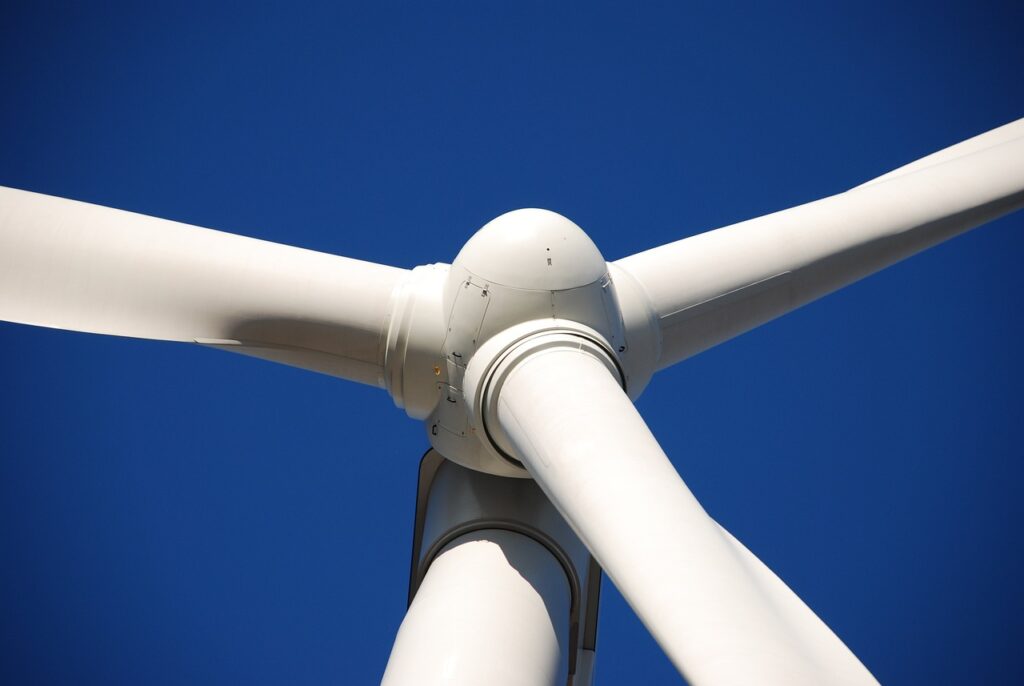
Technological Advancements: Pushing the Boundaries
The Next Generation of Wind Turbines
Technological advancements are at the forefront of increasing the efficiency and reducing the cost of wind energy. “What is wind energy’s future with new technologies?” The industry is exploring innovative designs, such as vertical-axis wind turbines and floating offshore platforms, that could unlock wind resources in previously inaccessible areas.
- Smart Technology and AI: The integration of smart technology and artificial intelligence into wind turbine operations is transforming how wind farms are managed. These technologies enable real-time monitoring and predictive maintenance, reducing downtime and increasing overall efficiency.
Enhancing Capacity and Efficiency
The quest for larger rotor diameters and taller towers continues as engineers seek to capture more wind at higher elevations, where wind speeds are generally stronger and more consistent. Additionally, efforts to improve the capacity factor of wind turbines—how much power a turbine produces relative to its potential—remain a key focus. Innovations in materials science are leading to lighter, stronger turbine blades, allowing for greater capture of wind energy.
What is Wind Energy?
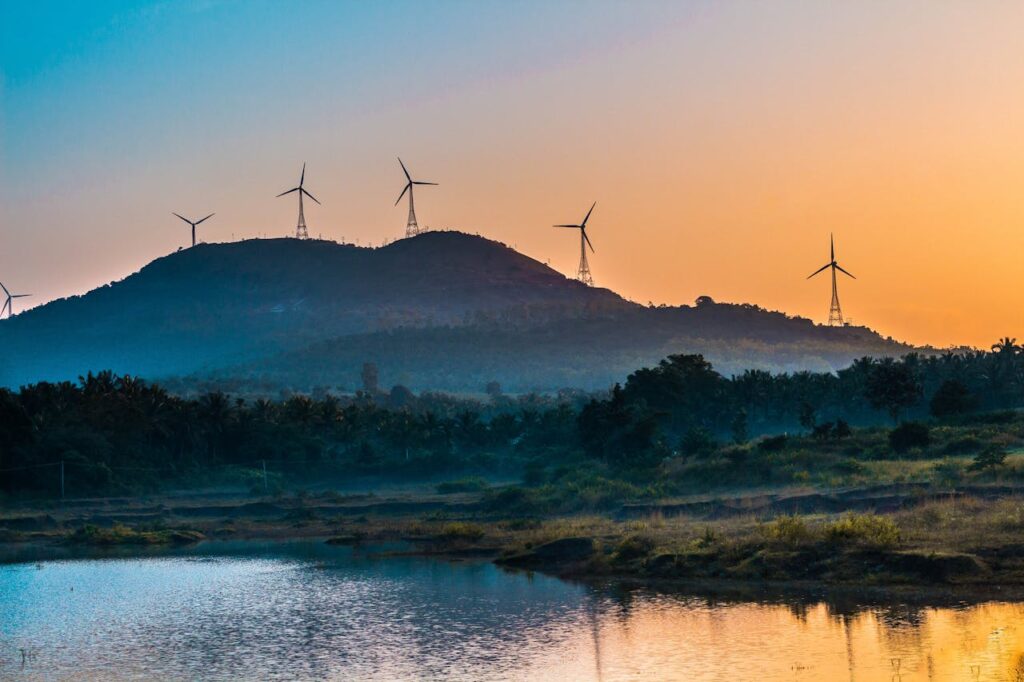
Wind Energy on the Global Stage
A Key Player in Renewable Energy
Wind energy is not just a national treasure but a global powerhouse. “What is wind energy’s role on the world stage?” It’s a critical component of the international push toward renewable energy, with countries around the world investing in wind as a means to reduce greenhouse gas emissions and combat climate change.
- Global Cooperation and Competition: The race to lead in wind energy technology has spurred cooperation and competition among nations. International agreements and collaborations, such as those under the Paris Agreement, emphasize the role of wind energy in achieving global sustainability goals.
What is Wind Energy? Wind Energy in Developing Countries
Developing countries, in particular, stand to benefit immensely from wind energy. With vast, untapped wind resources and growing electricity demand, these countries have the opportunity to leapfrog traditional fossil fuel infrastructure and embrace a cleaner, more sustainable energy future.
- Empowering Remote Communities: For remote and rural areas in developing countries, small wind turbines offer a viable solution for electrification. Empowering communities with reliable, renewable energy. This not only improves living standards but also supports local economic development.
What is wind energy? Frequently Asked Questions
How does wind energy integrate with existing power grids?
Wind energy integrates into existing power grids through a combination of advanced forecasting, grid management technologies, and energy storage solutions. Wind energy’s variable nature requires grid operators to predict wind patterns and adjust the supply from other sources accordingly. Modern grid management systems can quickly respond to changes in wind energy production, ensuring a stable and reliable electricity supply. Energy storage technologies, like batteries, help by storing excess wind energy when production is high and releasing it when production decreases. This integration supports a balanced and flexible energy grid capable of accommodating renewable sources alongside traditional ones.
What are the latest breakthroughs in wind turbine technology?
The latest breakthroughs in wind turbine technology include advancements in materials, design, and operational efficiency. New materials like carbon fiber are being used to create lighter and stronger turbine blades. Allowing for larger rotors that can capture more wind energy. Aerodynamic designs and control systems have significantly improved turbines’ efficiency. Enabling them to generate more electricity even at low wind speeds. Additionally, floating wind turbines have emerged as a promising technology for deep-water offshore installations. Expanding the potential for wind energy generation to areas with deep seabeds.
How can countries without significant wind resources participate in the wind energy boom?
Countries with limited wind resources can participate in the wind energy boom by investing in technology and infrastructure that complement wind energy. Such as solar power or energy storage, to create a diversified renewable energy mix. They can also invest in offshore wind energy, which might offer better wind conditions than onshore. Regional cooperation and energy trading with countries that have high wind potential allow for the sharing of renewable energy resources. Additionally, advancements in wind turbine technology are making it feasible to generate wind energy in areas with lower wind speeds. Widening the scope for countries to develop their wind energy capabilities.
What are the economic benefits of offshore wind energy compared to onshore wind?
What are the economic benefits of offshore wind energy compared to onshore wind?
Offshore wind energy offers several economic benefits over onshore wind. Including higher and more consistent wind speeds that result in greater electricity generation and higher efficiency. Although the initial investment and maintenance costs are higher for offshore wind farms, the higher energy output can lead to lower overall costs per unit of electricity generated over the turbine’s lifespan. Offshore wind also has the potential to create numerous jobs in construction, maintenance, and the maritime industry. Additionally, offshore wind farms are typically located away from populated areas. Minimizing the issues of land use and local opposition that can affect onshore wind projects.
How is wind energy contributing to energy security worldwide?
Wind energy is contributing to energy security worldwide by diversifying energy sources and reducing dependence on imported fossil fuels. Which are subject to price volatility and supply disruptions. By generating electricity locally from wind, countries can lessen their vulnerability to global energy market fluctuations. And enhance their energy independence. Wind energy’s scalability and rapid deployment capability mean it can quickly respond to growing energy demands. Furthermore, as part of a broader renewable energy mix, wind energy helps stabilize the grid and provides a reliable, sustainable source of power. Contributing to a more secure and resilient global energy landscape.
The narrative of wind energy is one of constant innovation, economic opportunity, and global impact. As the world increasingly turns to renewable sources to power its future, wind energy stands as a beacon of sustainable, clean energy. The journey ahead is filled with potential, as new technologies, policies, and initiatives continue to shape the wind energy landscape.
What is Wind Energy?
Shaping Policies for Wind Energy’s Future

Policy Impacts on Wind Energy Growth
Policy and regulatory frameworks are pivotal in shaping the trajectory of wind energy development. “What is wind energy’s pathway through policy?” Governments around the world are crafting policies to encourage the adoption of wind and other renewable energy sources. Recognizing their importance in achieving environmental targets and ensuring energy security. These policies often include renewable energy targets, streamlined permitting processes for wind projects, and financial incentives to lower the barriers to entry for new projects.
- Renewable Portfolio Standards (RPS): Many regions have implemented RPS policies. Requiring utilities to source a certain percentage of their electricity from renewable sources. These standards are a direct driver of wind energy investment. Pushing utilities to incorporate more wind power into their energy mix.
Financial Mechanisms Supporting Wind Energy
Beyond tax credits and subsidies, innovative financial mechanisms like green bonds and renewable energy certificates (RECs) are becoming increasingly important. These instruments allow investors to directly fund renewable projects. And enable companies to claim their electricity is sourced from renewable energy, respectively. Such mechanisms not only provide additional funding for wind energy projects. But also promote transparency and accountability in renewable energy consumption.
Environmental Considerations: Balancing Act
Mitigating Impact on Wildlife and Habitats
While wind energy is a clean and sustainable resource, it is not without its environmental challenges. “What is wind energy’s impact on the environment?” The construction and operation of wind turbines can affect local wildlife, particularly birds and bats. The industry is actively researching and implementing mitigation strategies. Such as siting turbines away from migratory paths and using technology to detect and deter wildlife from turbine areas.
- Promoting Biodiversity: Efforts to understand and minimize the ecological footprint of wind farms are ongoing. In some cases, wind farms have been designed to coexist with agriculture and natural habitats, promoting biodiversity.
What is Wind Energy?
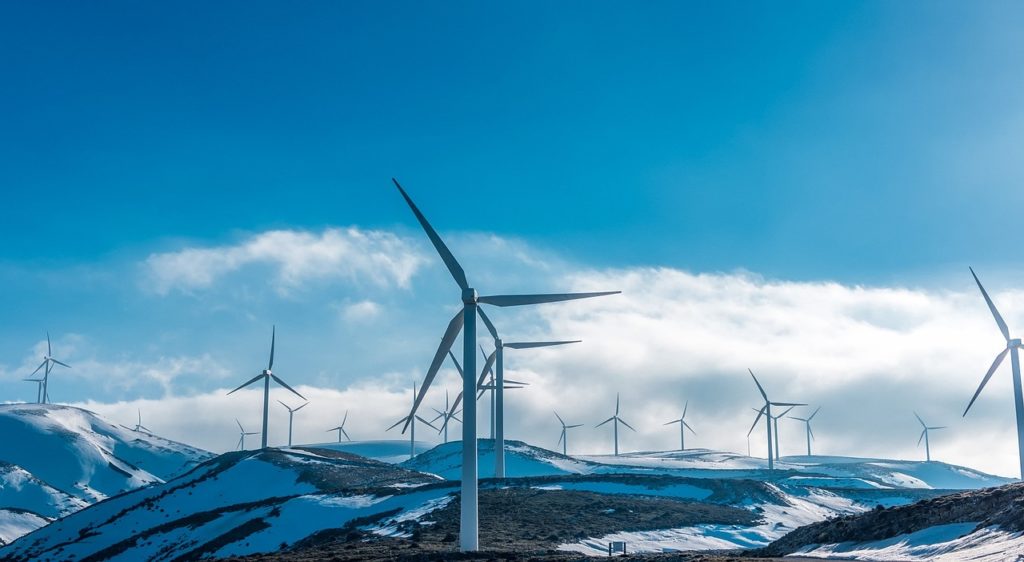
The Future of Wind Energy: A Vision of Sustainability
Innovations Leading the Way
The future of wind energy is bright, with innovations in turbine design, energy storage, and grid integration paving the way for even greater adoption. “What is wind energy’s future?” The development of more efficient turbines capable of operating at lower wind speeds is expanding the potential for wind energy in less windy regions. Moreover, advancements in battery technology are making it easier to store wind-generated electricity. Addressing one of the key challenges of wind energy: its variability.
- Hybrid Systems and Grid Stability: The integration of wind with other renewable sources, like solar, and storage solutions is creating more resilient and flexible energy systems. These hybrid systems can provide a steadier supply of electricity, enhancing grid stability and supporting the transition to a renewable energy grid.
Global Wind Energy Outlook
The global outlook for wind energy is one of continued growth and expansion. With countries setting ambitious renewable energy targets and the cost of wind energy continuing to fall, wind is set to play an indispensable role in the global energy mix. The International Energy Agency (IEA) forecasts significant increases in wind power capacity over the next decade. Highlighting its critical role in achieving global decarbonization goals.
- Embracing Offshore and Emerging Markets: The expansion of offshore wind energy, with its higher and more consistent wind speeds, presents an enormous opportunity for energy generation. Additionally, emerging markets in Africa, Asia, and Latin America are poised for growth. Wind energy offers a viable solution to increasing energy demand and improving energy access.
What is wind energy? Frequently Asked Questions
What are the main barriers to wind energy adoption?
The main barriers to wind energy adoption include high upfront costs, technological and logistical challenges, public opposition, and regulatory hurdles. Initial investments for wind turbine installation and grid integration can be substantial, although costs have been decreasing. Technological challenges involve optimizing turbine performance in diverse conditions and integrating variable wind energy into existing power grids. Public opposition, often referred to as “not in my backyard” (NIMBY) syndrome, can arise due to concerns about landscape impact, noise, and wildlife. Lastly, regulatory hurdles, such as lengthy permitting processes, can delay project development.
How can communities benefit from local wind energy projects?
Communities can benefit from local wind energy projects in several ways. Economically, these projects create jobs during construction and ongoing operations. They can also provide a new source of revenue through land lease payments to property owners. And increased tax revenues to local governments, which can support public services. Environmentally, wind projects contribute to cleaner air and lower greenhouse gas emissions. Additionally, community wind projects, where residents have a stake in the development, can keep more economic benefits within the community. And foster a sense of ownership and pride in contributing to renewable energy goals.
What role does technology play in optimizing wind farm locations?
Technology plays a crucial role in optimizing wind farm locations through advanced data analytics, geographic information systems (GIS), and simulation models. These tools allow developers to analyze wind patterns, geography, and environmental constraints. To identify the most efficient and least impactful sites for wind turbines. LiDAR (Light Detection and Ranging) technology can assess wind resources at specific sites accurately. Additionally, machine learning algorithms can predict wind farm performance under various conditions. Aiding in the design of layouts that maximize energy production while minimizing environmental and social impacts.
How are countries collaborating to advance global wind energy adoption?
Countries are collaborating to advance global wind energy adoption through international agreements, research partnerships, and knowledge-sharing initiatives. Agreements like the Paris Climate Accord encourage nations to increase their renewable energy use, including wind, to combat climate change. Multilateral organizations, such as the International Renewable Energy Agency (IRENA), facilitate collaboration on policy, technology, and financing. Countries also engage in bilateral and multilateral research projects. To develop advanced wind technologies and share best practices in wind energy policy, planning, and implementation.
What steps can individuals take to support wind energy development?
Individuals can support wind energy development in several ways. Advocating for renewable energy policies at the local, state, and national levels can help create a more favorable regulatory environment for wind projects. Supporting or investing in community wind projects or purchasing green power from their utility are direct ways to promote wind energy. Educating others about the benefits of wind energy and dispelling myths can also increase public support. Lastly, individuals can reduce their overall energy consumption. Making it easier for renewables like wind to meet a larger share of the energy demand.
What is wind energy? Conclusion
As we look to the future, wind energy stands as a cornerstone of the transition to a more sustainable, renewable energy-powered world. Its potential to reduce greenhouse gas emissions, drive economic growth, and provide energy security makes it a critical component of global efforts to combat climate change and promote sustainable development. With ongoing advancements in technology, policy support, and a growing recognition of its environmental and economic benefits, wind energy is set to be a leading force in shaping a cleaner, greener future.
This comprehensive exploration of wind energy underscores its vital role in our energy landscape. Whether you’re a policymaker, industry professional, or simply someone interested in sustainable energy, the journey of wind energy from an ancient resource to a modern powerhouse of renewable energy offers insights and inspiration for a sustainable future. Let’s continue to harness the power of the wind, propelling us towards a cleaner, more resilient energy future.
Thank you for reading this far, I hope that you have found it informative. If so, would you be kind enough to share What is wind energy with your friends?
Recent Posts
Understanding Energy and Electricity: The Power For Progress
Energy and Electricity Energy and electricity are integral components of modern life, powering everything from homes and businesses to transportation and communication. Without them, the...
The Future of Wind Energy The future of wind energy is set to play a critical role in addressing global energy needs while combating climate change. As renewable energy sources like wind and...



